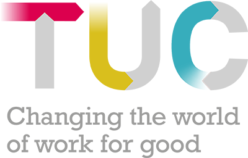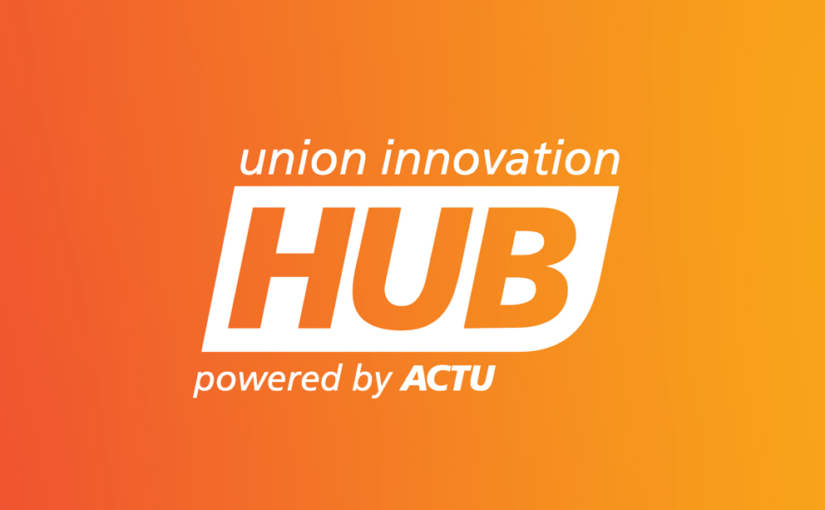The ACTU’s Union Innovation Hub is a really ambitious program of group-buying and co-design for core membership software for Australian unions, used by around 30 unions across different states, Chris Walton and Stephen Gargano joined us for a Digital Lab webinar, to talk about what they’ve done, and how they went about it.
I’ve been really keen to hear more about this one because it’s one of the union movements most ambitious collective investments globally at the moment. And as we’ve got a bunch of unions currently putting their own CRM systems under the microscope here in the UK, there could be a lot of takeaways for us from how they’ve approached the same issues.
The Union Innovation Hub is a non-profit tech consultancy, fully owned by the ACTU, and existing purely to work with unions to fast track digital innovation and reduce its cost.
Whilst it’s set up to earn enough to cover its costs now that it’s reaches scale, it needed an initial investment from the ACTU to establish.
The impetus for this came about due to shortcomings of the market for union software:
- Too many outdated database products were focused purely on membership needs rather than extending to the needs of organising.
- Many didn’t allow the kind of campaigning and engagement tools unions wanted to be using.
- Tools were too expensive, with charges for the most basic customisations, even where that work had already been developed for other clients.
- Reporting didn’t work for unions’ key metrics, inhibiting data driven decisions.
- Integration was poor, leading to fragmenting systems and inefficiencies in working between them.
- Small vendors, relying on single people for support to critical tools, or using old technology with patchy support, opened unions up to risk.
At the same time, members were expecting an ever higher standard of online member experiences, such as greater personalisation, and quick access to a wider range of services.
The Union Innovation Hub was set up to disrupt things.
Disrupting pricing
The ACTU picked a platform to build in, and negotiated a group deal for it, which would be the transparent rate set for all unions, breaking the model of secretive pricing and hidden costs.
Rather than a usual per-seat licence, they negotiated a low per-member fee (currently around £1.50 per member per year, reduced for larger unions), based on as many seats as the union needed. This reflected the devolved nature of unions, where reps were likely to become major users of some parts of the system’s functionality. A traditional licence arrangement might have kept usage restricted to central teams only.
Disrupting implementation
They aimed to reduce the overall costs of implementations and the risk of projects ballooning and costing far more than initial quotes.
They did this by standardising a set of core requirements for unions and developing once to fit it. Whilst all unions had differences, 90% of the things they needed were essentially the same. “IMIS for Unions” was created as a series of templates that unions could tweak further if needed (with these changes included in the price), but which would work for most unions straight off the bat.
The build process involves understanding how the union, its membership, and operational sectors are structured, and configuring that model to work through the standard template tools.
And because much of the functionality is already built and the Hub directly employs its own developers, working on a non-profit basis, build costs and additional costs in implementation are kept to a minimum. Builds so far have cost between £50,000 and £120,000. A fixed price is offered, with additional costs only if a custom module, involving significant development, is required.
Implementations typically take two to three months to get the instance up and running with the union’s data, and then a further 6 months to tweak and make unique through engagement and training with staff from each area in the union.
Disrupting support
Once unions are on the IMIS for Unions system, the Hub seeks to share best practice, and support in adoption into the union through standardised training resources. For examples, tutorials are built into pages on the system.
They have also used their group buying power to agree a range of significantly cheaper additions to the system with integrating suppliers, such as SMS credits, payment processing.
Integrations can be developed and maintained significantly more cheaply through the Hub model. All unions that are interested in a piece of functionality can contribute to its development, and then all get the benefit, rather than each needing to pay for standalone development. They’ve used this to integrate campaign tools, marketing automation, links with SharePoint/Outlook, surveys and more.
The Hub also aims to support unions in developing their own in-house expertise in working with IMIS and the IMIS for Unions templates. By involving union staff in the build, they help build capacity in the union once the initial project is complete. Many unions can then make improvements which are shared between unions in the Hub.
What does it look like?
If you’d like to see more of the system itself, Stephen and Chris recorded a demo video for us, giving a tour of many of the system’s core features. Watch the video here.
The roadmap
The Hub runs online networking throughout the year, but brings all union clients together for annual conferences as well as Hub leader meetings every six weeks.
This allows them to discuss and agree the next priorities for new development, and which unions want to take part in it. Given the Hub only has a certain level of resource, this helps reach consensus on priorities.
At the same time, they don’t stop unions from doing their own thing, if they feel they need to develop additional functionality just for themselves (such as a custom integration with a service no other union wants to use). Or unions agree to share the cost of development and utilise a contractor.
For the next few years though, the Hub expect to spend a lot of time helping unions grow into the capabilities of the existing technology. Important areas here could be in setting up custom real time reporting for different roles in the union and encouraging adoption of the technology to improve organising and campaigning.
The Hub has already hired a marketing automation expert and helped 13 unions implement pre-defined interactive content journeys to members who fit different criteria (such as welcome routes for new joiners, or remarketing journeys to people who don’t complete the join form).
Funding
The Hub is fully owned by the ACTU, but works separately from them, and on an ongoing basis the ACTU don’t put money in or take it out. The Hub funds itself from development fees, some service fees, and a small ongoing rebate from ASI license fees.
Guides, group deals and publications are available to all ACTU affiliates, whether they use the Hub’s products or not.
International potential
The Hub is keen for unions in other parts of the world to use the tools it’s developed, as it means more people are working on the system, improving it and developing best practice. They are particularly keen to see it used by unions in developing countries to get a boost in their tech infrastructure, and are talking to GUFs about making this a reality.
There’s also a potential for UK unions to make some use of this – as there’s a lot of overlap between the functionality needed by Australian and UK unions. Some areas might need custom work, such as ballot campaign management, but there’s a lot that would work for UK unions out of the box.
But the Hub are realistic that they can’t support the full Australian model (with group buys, implementation and support) outside of Australia. To achieve a number of the big benefits their model brings would require unions in the UK cooperating to extend or negotiate group deals and the finding of a trusted partner to do the implementations using the iMIS for Unions template. It is possible to ‘’Hub’’ unions in any country on the same system.
Where next?
If you’re interested in the potential of this system in the UK, please get in touch – we’d be keen to talk more.
We’re also hoping to do more soon to look at IMIS in greater depth, as well as other key CRM platforms that unions should be considering when they come to tender for a new system.

